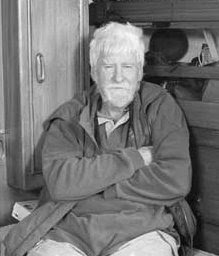 |
| Main Bulkhead reinforcement |
Plans. We had a complete set of plans included with our initial purchase.Build. I would have to say very strong.
Bulkheads and knees glassed to hull and deck.
Hull and deck internally joined by fibreglass and bolts approximately 6”/15cm apart through aluminium toerails running full length of gunwales. Main bulkhead strengthened with 4x beams of laminated timber glued, bolted and glassed to bulkhead, hull and deck head.
3x internal substantial horizontal stringers glassed along each side of hull to aft bulkhead.
Engine beds glassed to hull.
 |
| On the Hard at Oyster Cove Marina |
Hull Protection. 4xlayers of epoxy Interprotect rolled on bottom and 3xlayers on topsides before final painting and launching. Topsides painted in (2xpack) Navy Blue.
Keel. Ballast: 3.25 tons/3.32 tonnes 7,304 lbs, 3320 kg. Encapsulated internal mix of lead ingots and lead shot all bound together with resin and covered with 4x layers glass. Reinforced with glass-covered ply floors to top of keel and hull. A deep bilge located after side of keel where an automatic bilge pump is located plus the two manual bilge pumps hoses. Bilge area also coated with 3x coats of epoxy Interprotect.
Mast and Boom. The mast is T11section, one standard stronger than T10 section, originally recommended by La Mer Spars for the Compass 38. T11 section has same outside dimensions as T10 section but also has two reinforcing ribs extending along length of the section. Masthead is a welded fitting by Sheerline Spars. Single spreader rig plus set of diamonds for inner staysail so no need for running backstays. Boom is T9 section. 2x spinnaker poles, deck mounted. Mast, boom and spinnaker poles painted white with 2x pot paint, on top of etch primer.
Steering. Whitlock wheel steering system via chain and flexible wire pulley system to quadrant mounted on rudder shaft below rear of cockpit. Accessible through lazarette. Emergency tiller fits directly to top of rudder shaft should wheel steering system fail. Rudder. Skeg-mounted with solid stainless steel shaft. Pintle and gudgeon fitting at bottom of skeg supporting rudder. Bronze thru hull fitting where rudder enters bottom of hull and another bronze fitting supporting rudder shaft at top where it enters cockpit.
Canvas Work. Folding dodger, 2x hatch covers, 7x winch covers, compass cover, mainsail cover (new 2008) and large heavy-duty awning covering cockpit and extending forward to mast.
Self Steering Gear. We installed a 1990 Fleming Major wind vane servo-pendulum self steering gear. Heavy duty stainless steel and worth every penny!


























